* (restored/expanded)
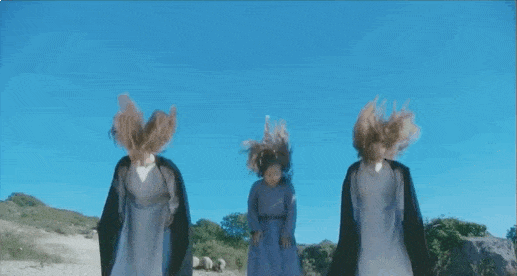
‘There were boos at Cannes when Bruno Dumont’s L’humanité (1999) won three major awards. Boos perhaps because he’s self-taught, an unusual filmmaker working outside the main tradition of the French film industry, and a creator of such extraordinarily fresh work that he polarizes opinion moreso than Mr. Stone-in-the-shoe himself — Lars von Trier. Instead, Dumont — unhappy with modern art cinema (“it’s lost touch with life”) — wants his cinema to “return man to the body, to the heart, to truth”. I greatly admire his clean, organic approach and find his films intoxicating, indeed, utterly essential.
‘If you gravitate towards cinema that is more than just fickle entertainment (a rare pastime today, I know) then the haloed procession of poet filmmakers over the last century will probably have caught your interest. For me, Bruno Dumont’s cinema is refreshingly devoid of the aristocratic notions and self-referential winking that can sometimes asphyxiate modern art cinema. Dumont refuses to let meaning be obfuscated by these unfortunate traits – traits which have ghettoized modern art films to the fringes of cultural discourse. His films aren’t made as traditional entertainment nor do they exist to make money (something that must seem incomprehensible to most American filmmakers and audiences) — but how refreshing they are!
‘Bruno Dumont spent his twenties and most of his thirties working two jobs (teaching philosophy and making commercial films for local businesses) after being refused a place at the top film schools in France. His first film was for a bank surveillance company. Subsequent films dealt with heavy industry, machines in action and manufacturing procedures — basically from-a-raw-material-to-a-finished-product type films. He described the process in a 1999 interview, “I had the camera go inside the chocolate machine, which brought me one of my first emotions through film. It was beautiful to see chocolate fall down and I managed to amplify this and create emotion. People were touched to see the candy, and after that I was always trying, always searching for the emotion. I was only shooting the machines, but I was looking for the emotion in the machines.”
‘For fifteen years he shot candy manufacturing films, the building of a highway, a real estate attorney’s congress, and other seemingly banal projects. Dumont described how, looking back on this, everything he was filming, no matter how dull, became interesting, “I learnt how to make uninteresting things interesting. The way I work today is completely linked to those ten years of filming nothing.”‘ — Nick Wrigley, MoC, 2003
‘Dumont is that French director your friends have warned you about. His characters pontificate about God, death, and evil between being violated and subjugated. He shoots through a lens filter called “abject Gallic misery.” Christ-figures abound and they’re mortified enough for three crucifixions. He’s been mixing Tod Browning, Catherine Breillat and Carl th. Dreyer for over fifteen years and until recently he had but two settings: beautifully troubling and unbearably bleak. It seems however, he’s emptied the suggestion box and realized that perhaps he’d gone as far as his obsessions could carry him in his chosen mode. Maybe seven films without a single laugh was a little much? Well, fear Dumont’s unsettling vision of humanity no more: he’s trawled through his back catalogue (which includes the punishing Twentynine Palms, the transcendent Hadewijch, and the abstruse Hors Satan) and, for his eighth and most recent film, put together a hilarious remix of his greatest hits in the form of a joyfully bizarre 3-hour miniseries. Saying P’tit Quinquin is Dumont’s funniest and warmest film doesn’t count for much, but could I interest you in one of the sharpest autocritiques in recent memory? Dumont’s real trick isn’t spinning his iconic imagery for laughs, but doing so without straying from his usual mission of investigating the extent to which humans can possibly be modeled after God in the most violent imaginable terms.
‘Dumont will next helm Ma Loute, a burlesque period comedy in the vein of Li’l Quinquin co-starring Juliette Binoche, Fabrice Luchini and Valeria Bruni Tedeschi. Set at the beginning of the 20th century, in a seaside village of the North of France, the film will center around the forbidden romance between Maloute and Billie who belong to two family clans who hate each other. On one hand, there are The Belforts, modest fishermen and cannibals, and on the other, the Van Peteghems, upper-class bourgeois known for being consanguineous and crazy thieves. Embroiled in raft of mysterious disappearances, the families are being investigated by two cops.’ — collaged
___
Stills



















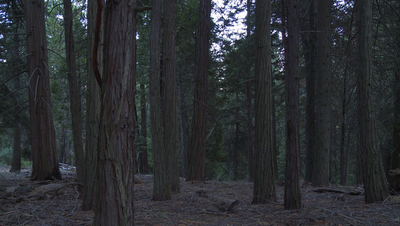























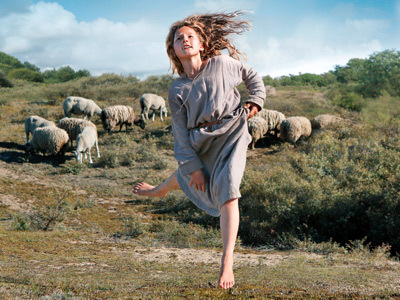
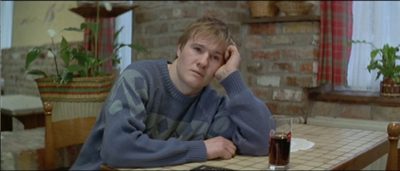
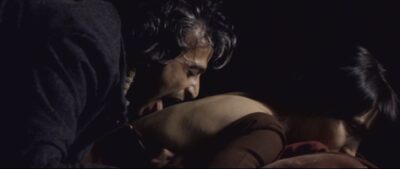

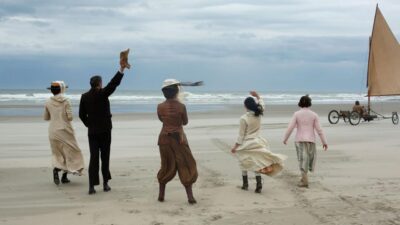
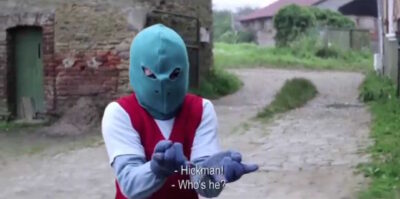



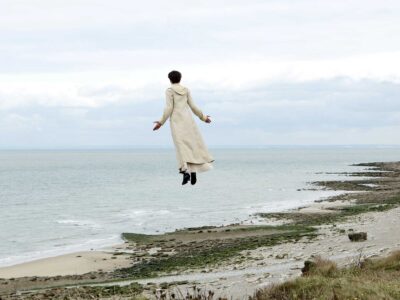








____
Further
Bruno Dumont Official Website
Bruno Dumont @ IMDb
Bruno Dumont @ france culture
Bruno Dumont @ mubi
‘Bruno Dumont’s Bodies’
‘The man with two brains’
‘Films Through The Window: The Cinema Of Bruno Dumont’
‘Bruno Dumont : “Dans ‘P’tit Quinquin’, il y a tout, la déconnade et les larmes”’
‘Chiaroscuro levels of thought.’
‘Vies et passions de Bruno Dumont, cinéaste radical’
‘Dead Meat: Bruno Dumont’s P’tit Quinquin’
‘Sculpture, Bruno DUMONT, 1996’
‘HOPE LIES AT 24 FRAMES PER SECOND: Bruno Dumont’
Bruno Dumont interviewed re: ‘Hors Satan’
‘Bruno Dumont Reveals His Sense of Humor’, by Steevee
Podcast: ‘Bruno Dumont and The New French Mistake’
Video: ‘Coffret Bruno Dumont’
‘The New American Old West: Bruno Dumont’s Twentynine Palms’
‘Bruno Dumont, cinéaste de la transcendance’
____
Extras
Interview with Bruno Dumont (2006, English subtitles)
Entretien avec Bruno Dumont (2014)
Entretien avec Bruno Dumont (2011)
MASTERCLASS avec Bruno Dumont
[Festival de Cannes : Bruno Dumont : grand prix du jury]
______
Interview
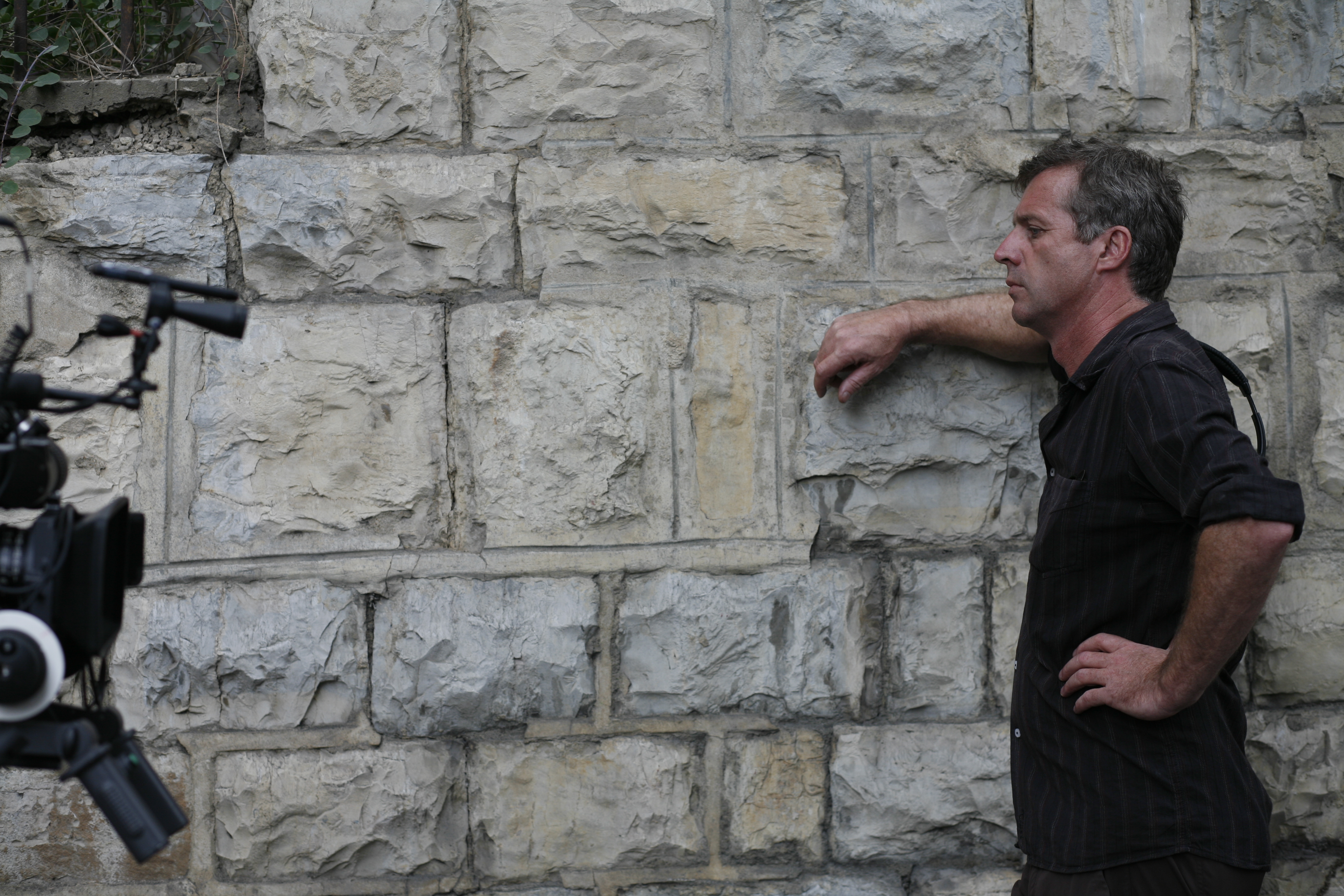
Why do you make films?
BRUNO DUMONT: That’s a very simple and a very difficult question. There is a desire expressed through cinema and its methods to search and to find what’s inside of others. I would like to express my own views on the mysteries of life.
Degas has said that art is false, and one can only approach the truth through falsity. Do you think that the cinema, because it is a false medium, is best able in art to capture something like the truth?
BD: Yes, I think that all art is false. And that with art in general–talking about life in false ways–can you attain truth. Because the truth can only be expressed through lies and falseness. And those who film truth directly, in your face like seen on television, tell us nothing. Thus the work of the artist is to reveal the truth through his work. When Picasso and Braque invented Cubism, the representation was false in comparison to reality; but it was the reality of truth that they were expressing. An artist must modify reality. It is only through modification that the truth can be expressed. That’s what Degas meant when he said that art was false.
But why do you choose cinema in particular?
BD: I could have easily used painting or literature to express myself, but I think that cinema itself has the capacity to express what is invisible–and this interests me. And, also, cinema is an art of time, of the temporal. Within the perception of existence, time is the most important material of life. Therefore, cinema has a natural capacity to talk about life.
How much does it also have to do with movement as opposed to time?
BD: The movement inside of the frame, the length of the take is the art of organization, everything is time. When I shoot a take from beginning to end, this is time. The actor who moves; this is time. Therefore, all of cinema is time. The art of mise-en-scene is organizing time. The time of the actor, the time of the action, the time of waiting.
You’ve said that very few filmmakers make real cinema. What’s your definition of real cinema?
BD: It’s understanding that what cinema is — is its methods, its artistry, its possibilities. It’s not like all art. It’s understanding what art can be and do. It’s fundamentally a way of expressing oneself. It’s expressing what lies deep within our heart. At the same time, there is a lot of mystery–even in the films that I make. I think the cinema is about mystery. Most of all a spiritual mystery. That’s the most secretive, enigmatic, and foreign. Art is made up of the spiritual.
Are you a believer?
BD: No. If it’s not in man, alone, unsubmissive.
I think connected to the rapture and ecstasy of mystical experiences is the idea of renunciation and abstinence, which is the engine or tool for such an experience. Do you find that by subtracting things from your cinema you are in fact approaching that state?
BD: Yes, absolutely, there’s a connection—and there’s a moral aspect to directing. I’m searching for approaches to filmmaking that have moralistic elements to them and that comprise rules. I impose rules. For example, on the actress [Julie Sokolowski], I forbade her to eat or sleep before shooting. In the same way, I chose an aspect ratio of 1:66 that was very constricting for me, limiting the frame to exactly what’s essential. Also, I shot the film using mono sound. So these constraints that I impose on myself also impose certain choices and force us to limit ourselves. It’s true there’s a process of taking away and purifying or paring down to what’s essential. I make films with very little money, but surprisingly enough it’s not a problem. On the contrary, it’s very helpful to what I’m doing. It’s extraordinary to make a film about religious faith with an actress who has absolutely no belief in God whatsoever. But these contradictions force us to work harder. Surprisingly, I found that the more paradoxical things were, the better the film works. It’s something I don’t understand—and that I find very disturbing.
How do you position yourself in relation to an audience?
BD: My position is very paradoxical. When I’m making a film, I’m not concerned with how a spectator will respond. I’m not working to make the films accessible, but at the same time, I have a great deal of respect for the audience because I’m aware that it’s through their gaze that my film will be completed. I realize I’m an individual just like any other member of the audience, and I think if there is a dignity to cinema, it lies in the audience who receives the film and completes it.
______________
Bruno Dumont’s 12 films
____________
Vie de Jesus (1997)
‘In La vie de Jésus, Dumont represents the youth of today as decaying — lost and despairing — yet he’s aware that they hold the future in their hands. He wants to combat their despair, to make them understand that they are capable of inventing their own future, “What’s important is the person who watches it. He continues to live,” — Dumont said at the film’s release — “perhaps in this darkness he will see the glimmer, but I stopped, finally at the moment when the glimmer appears. I’m not a prophet, it is not for me to say anything, it is for people to do something.”‘ — MoC
Trailer
Excerpt
Excerpt
____________
L’Humanite (1999)
‘L’humanité is a film that people either seem to be locked into from the start or they just can’t abide. At the time of L’humanité’s release, Sight & Sound magazine in the UK ran a feature article with an opposing rant and rave by two writers. The rave was by Mark Cousins who talked about the “stare” of the film. He wrote, “Dumont has no pity in his eyes for his extraordinarily empathetic policeman, who seems to absorb all the evil he sees. This creates a completely gripping system of looks — icy cold looking at burning hot — which is miles away from the Film Studies categories of the gaze, the objectifying look, the invisible narrative look. The stare of L’humanité is CinemaScope Pasolini, unblinking Bresson.”‘ — MoC
Opening scene
Excerpt
____________
Twentynine Palms (2003)
‘Dumont’s third is perhaps his most polarizing film yet. If one were trying to plot where Dumont might go after his first two films, you’d be hard-pressed to plot this. It’s certainly no retread, and it marks a few important changes in Dumont’s approach. Firstly, it’s set in the USA; secondly, it features “proper actors” for the first time; and thirdly, it was written in two weeks whereas his earlier films took a number of years each. Twentynine Palms is a unique film which shows — in the simplest, bleakest terms — how senseless violence can engender further senseless violence. The visceral immediacy of this summation stays with you for days.’ — MoC
Trailer
Excerpt
Excerpt
____________
Flandres (2006)
‘Flanders is a remarkable film, though it is not an easy film to digest. This is director Bruno Dumont’s fourth feature, and like his previous films, it contains scenes of crude behavior and gruesome brutality. Flanders is relentlessly bleak, but as it works its way into your bloodstream, the aftertaste is somewhat akin to relief. It’s like a confession. For those who allow it, Flanders offers the comfort of recognition, and acceptance, of what it means to be human. Dumont refutes the notion of film as entertainment with a monk’s diligence. An austere stylist, he pares everything down to its essence, so that a film like Flanders almost doesn’t feel like a film at all. He uses nonprofessional actors, there is no music on the soundtrack, and there is very little in the way of a story. It’s a bit like what happens when we look at an abstract expressionist painting. It’s better not to try to understand the painting on an intellectual level, but to let it enter your awareness through how it makes you feel, in your gut.’ — Beverly Berning, Culture Vulture
Trailer
Excerpt
The making of Flandres
____________
Hadewijch (2009)
‘Hadewijch ends with a bang—or seems to—after which Hadewijch returns us to the convent for what at first feels like a flashback, and then like a dream (both of which would also be Dumont firsts), and which, even taken literally, ranks among the most haunting and profoundly beautiful sequences in all of Dumont’s work. It is a sequence that begins with an act of penance and builds to the long-delayed meeting between Hadewijch and a grubby-faced construction worker (Henri Cretel, who was the cuckolding friend in Flanders) labouring on the convent grounds. Like so much in Hadewijch, what happens between them can be seen as something entirely of this world or as an act of divine intervention. Either way, it reaffirms that Dumont himself is a cause very much worth believing in.’ — Scott Foundas, Cinema Scope
Excerpt
Excerpt
Excerpt
_____________
Hors Satan (2011)
‘In Hors Satan (Outside Satan), which premiered at Un Certain Regard in 2011, a drifter (David Dewaele) who lives in a makeshift shelter on the Côte d’Opale shore (a few stacked bricks next to his campfire block the wind) has an intimate friendship with a lanky young emo girl (Alexandra Lemâtre) in a nearby town; she feeds him loaves of bread and they spend time lounging on the meadows, but to her dismay, he rebuffs her romantic advances. Their closeness deepens after he kills her stepfather, for reasons that are only hinted at (sexual abuse), unlocking a cycle of violent acts that engulfs the local community. An air of mystery surrounds the craggy-faced drifter, a man of worship twice seen kneeling in prayer in the twilight, his folded hands and rapt face echoing faded illustrations of Marian visionaries. Regarded as a spiritual healer by at least one woman, who seeks him out to minister to her catatonic teenage daughter, upon whom he performs a strangely lascivious exorcism, Dumont’s laconic anti-hero is neither divine nor demonic, despite his apparent ability (glimpsed in one eerily gorgeous sequence) to conjure fire. This dualism is never resolved; it is set to spin like a gyroscope. Though Dumont’s thematic interest in religion and morality persists from Hadewijch, the film’s reality is not the world’s. Instead, we are confronted with profane Nature — instinct and wildness, in many guises — as well as a few (supernatural) puzzles, then left to decide the undecidable for ourselves.’ — Filmmaker Magazine
Opening Scene
Excerpt
Excerpt
________________
Camille Claudel 1915 (2013)
‘There are at least three beautiful things in Bruno Dumont’s depressing new film. First, there are cinematographer Guillaume Deffontaines’s precise visual compositions. Stark and minimalist, at times they resemble classical Dutch painting. Second, there’s the film’s use of light—and Dumont’s patience with it. He employs lingering shots of the outdoor sun coming in through a gauzy window, or the light on a wall, or the shadows on a rug. Third, and most important, is Dumont’s use of light as metaphor for the radiance of Camille Claudel’s heart and soul. Camille (Juliette Binoche), one of history’s great tortured artists, is seen eking out a semblance of life in a rural lunatic asylum. From her prayers, and the look in her eyes, it’s clear that the light of God is within her. Aside from her brother, Paul (Jean-Luc Vincent), God is the only thing she can cling to. The barely-there narrative hinges upon Paul’s impending visit. Dumont surrounds Binoche with mentally handicapped actors—an unsettling choice that heightens the sense that Camille does not deserve her fate. He also makes Paul something of a heartless loon, so that when his much-anticipated visit takes place, it’s not long before Camille makes a scene, confirming her brother’s worst fears. Paul, in fact, has had a transfiguring experience, triggered by reading Rimbaud, and his own obsessive Catholic patter makes him seem even more off his rocker than Camille. It’s an impossibly hopeless situation, yet Dumont’s craft and Binoche’s face somehow achieve transcendence.’ — Film Comment
Trailer
Excerpt
Excerpt
_____________
P’tit Quinquin (2014)
‘The thing you’ll remember about P’tit Quinquin, over even the most perfectly timed joke or the adorably misshapen head of Quinquin, is the face of Bernard Pruvost, as the detective protecting his flock from the murderer. Pruvost looks like Albert Einstein and has a facial tic that causes his face to move involuntarily in very noticable ways, meaning he delivers something like four reactions for every stimuli and sometimes more. He’s a real-world cartoon in Dumont’s hands, a man who never stifles his attempts at respectability, even though they’re constantly rejected. His attempts at yelling at some kids about highway safety are thwarted when his partner turns their car in the wrong direction with his head still hanging out the window. Upon learning of the state of the first victim, he muses, more to himself than anyone listening: “Headless…so I need the head, basically.” However funny he is, there is an undeniable sadness to Pruvost’s character, a man unable to stop his town from succumbing to the slowly encroaching darkness. A long take late in the film finds him sitting and listening to the church organist play only for him, his face soaking with sadness. He’s as much cop as activist priest, fighting the devil one sin at a time, preserving an innocence that isn’t his to protect. He’s this season’s most offbeat detective, beating out even Joaquin Phoenix’s coke-snorting Doc Sportello in Inherent Vice.’ — Scout Tafoya
Trailer
Excerpt
Excerpt
______________
Slack Bay (2016)
‘“Slack Bay” is a gestural burlesque of passion and rage, of tense manners yielding to furious desires, of carefully constructed appearances warped and rent by the constant and hidden force of the unspeakable, of a society that depends on radically maintained differences and distinctions that don’t hold up against relentless natural forces—and even of a metaphysical sense of wonder that distills the grand peculiarity of the whole crazy scheme into mysteries of a holy absurdity.’ — Richard Brody, The New Yorker
Trailer
Excerpt
Excerpt
_______________
The Childhood of Joan of Arc (2017)
‘Pitched somewhere between Straub-Huillet and Headbangers Ball, Monty Python and Messiaen, Bruno Dumont’s new feature Jeannette, l’enfance de Jeanne d’Arc marks an unexpected and near-perfect synthesis of the French iconoclast’s many disparate interests and obsessions. Jeannette speaks most fully to both Dumont’s aleatoric process and his ideological constitution, traits which here find thrilling release in the form of a musical comedy inspired by the early life of France’s most famous martyr. Joining a long tradition of Joan of Arc films, Jeannette is unique amongst its forebears by the mere fact of its circumscribed vantage. While films by Bresson, Dreyer, Rivette, and Preminger have focused on Joan’s battlefield perils, her trial on charges of witchcraft and heresy, and eventual death at the stake at the age of 19, Dumont’s story centres on an adolescent Jeanne, from the throes of her spiritual awakening to her decision to leave home and take up arms. By reimagining the perspective of the prescribed Joan of Arc narrative, Dumont has in the process performed a keen bit of art-historical reconciliation, reframing the image of a woman whose life and legacy have been defined most often by her fate, rather than the complexities of her character.’ — Jordan Cronk
Trailer
Excerpt
___________
France (2021)
‘Is Bruno Dumont transitioning yet again? This was a dark melodrama and social satire – a damning critique of the parasitic nature of modern journalism. The best material here could easily have been whittled down to more trenchant effect, while the narrative is too twisty and digressive to sustain itself… What he’s attempting here is a new meshing of his broader comic style and the stark moral questioning that has always characterised his dramas – and while the attempt to juggle several registers should be applauded, the result is too irregular to really gel.’ — Jonathan Romney
Trailer
France – Q&A with Bruno Dumont
_____________
The Empire (2024)
‘The Empire, on the one hand, plays like a Star Wars spoof, and on the other is a natural extension of Dumont’s transcendent style, spiked with crude sexuality and freak-show mysticism à la Twin Peaks. There are lightsabers, intergalactic travels, a Light Side and a Dark Side led by humanoid warriors—or, rather, space creatures that take on the bodies of provincial townies in the north of France. On Earth, an innocuous-looking child known as “the Wain” embodies all the evil in the universe. Members of the Dark Side, including the Wain’s father, a louche fisherman; an iPhone-obsessed floozy; and a wild-eyed space jester played by Fabrice Luchini, are tasked with protecting the child. Adherents to the Light Side—a bikini-clad Jedi (Anamaria Vartolomei) and her sparrow-faced sidekick—must destroy the kid. Dumont pokes fun at the absolutism that dictates these warring factions, split between 0s and 1s, staging executions of random locals that come off as completely arbitrary (if only to us mere mortals). The banality of the Opal Coast countryside—with its cows, lazy cops, and junkyard aesthetics—assumes an awesome power thanks to Dumont’s dazzling wide compositions, creating humorous parallels between base human activities and celestial journeys. Ultimately, these mythologies devolve into nothingness, with the action (in the finale, a spaceship showdown) subsumed into a magnificent black hole, a void not unlike the serene indifference, the boredom, of quiet country folk.’ — Beatrice Loayza
Trailer
Explorez le VFX breakdown du film L’Empire, de Bruno Dumont
*
p.s. Hey. ** jay, Hey. That last ‘Alien’ movie is good? I suspected otherwise from afar, but I can’t remember why. Huh. ‘Blink Twice’ sounds like it definitely deserves at least a peek. Thanks, bud. ‘HHU’ is pricey? Even the Harper Collins one? That sucks. The Todd James version of ‘The Sluts’ is so much better. The cover of the normal version has always made me cringe. Low end homoerotic blah. Thanks about ‘French Hole’. Yeah, there are the entrances of some new secret passages to the whole there if one is looking for them. ‘La Chimera’, I don’t know it. Okay, another add, and it sounds like a top of the list prospect. Thanks a lot. You doing Xmas tonight or in the morning? If I were doing one, it would be tomorrow morning, USA style. ** Misanthrope, Paper Mario is maybe my favorite game franchise. The newest one, which is the one I’m playing right now, ‘Paper Mario: The Origami King’, is a blast. I liked Dylan when I was a teen and when he still doing his whole visionary thing. Plus I found Rimbaud through him because he referenced him in an interview way back. So, I guess I owe him. Owe him enough not to watch Chalamet try to make ‘meaningful’ faces in a sad attempt to be him. But to each his own, always and forever. ** _Black_Acrylic, ‘Hellraiser 2’ is a goody, Philip hit the mark. Literally my only plan for Xmas tomorrow is to listen to the new PT, so lucky me, all in all. ** Meg Gluth, Hey, Meg! I’m not allowed to share the details on the World Premiere quite yet, but I think I can say it’ll happen at the beginning of April. Yeah, I love our film, but, Jesus, has it been an endless struggle to get it into the birth canal. What Oscar has reported sounds mega. Meg-a, haha. I’ll watch for a local Claire concert, for sure. I would love to meet her. I hope she gets over here. I’m playing ‘Paper Mario: The Origami King’. It’s great, so clever and constantly inventive. Very Merry Xmas to you tomorrow however that may play out. ** Daniel, And you did get through, maestro. And thank for whatever effort it took. ** Charalampos, Your mom’s phone did the trick, I guess. No, no Xmas plans whatsoever. A walk in the quiet. Otherwise, the same old sans open stores. I assume that food you’re going to eat will be rather spectacular after three months’ preparation. Either that or an inedible antique. I would have to go back and look at your book to pick faves since I read it, gosh, months and months ago now. Your two formal methods of poem writing sound to have much potential. Love back from the middle of France. ** Malik, Hey! Awesome to have you around. Are things going well and interestingly with the theater company? Any recent works or things therein that have especially excited you? Okay, well, I’ll just memorise the name of the short film and hopefully have its bell rung if the film ever gets in my vicinity. Sounds quite interesting. Yeah, really sad and so unexpected loss: Ka. I guess at least he went out firing on all cylinders, as they say. Have a happy Xmas. ** James, I’m glad I made you read a bunch poems. MDMA, the band … their very early stuff is fun, but then they kind of lost it, imo. ‘Haikyuu!’ is news. I’ll look at it. Thanks. I’ve always been tall. I used to get bullied in elementary school because I was so tall but such a wuss. It’s a mixed blessing. No reason to romanticise tallness. I have not yet eaten custard donuts because it requires me taking the metro a ways and then walking a ways to the Krispy Kreme, and I didn’t feel it yesterday. However, I have plans located near the Krispy Kreme today, and I need something sweet to eat on Xmas, so, barring me breaking my leg or something, I should have donuts in tow by tonight. I do like custard, yes, as you can tell. Well, you felt very good leaving college, which that photo made most clear. Merriest Xmas humanly or divinely possible to us both. ** Lucas, Hi. Shit, eek, about your mom, but phew that she’s de-hospitalised. Enjoy your Xmas. Do your very best to, or, more importantly, I hope your company does their very best to give you one. Thanks for the card! It’s lovely. I only got one mailed Xmas card this year. I didn’t even get my annual John Waters Xmas card. Well, not yet anyway. There’s still the mail to come today. I really don’t think anything you write could be corny. Trust the feedback. Awesome! ** Steeqhen, ‘Hotboxed’ is a kind of cool word. I’m going to use it today and see what people’s faces look like when I use it. I liked ‘The Simpsons’ too. Maybe I liked ‘South Park’ even more. In fact I still like ‘South Park’. Happy you’re writing poetry. My Xmas is and looks to be very kind of nothing, which is fine really. The weather is cold, 6 degrees C, and kind of a grayish blue. No rain yet today. Snow would be nice, but it sure doesn’t look to be in offing. Happy Xmas Eve! ** Adem Berbic, Hey! The 26th should be A-okay for me and ideally for Zac too. I’ll check re: him. Just shoot me a reminder around then. Yes, believe or not, we finally got rid our film’s monster. We are left shouldering all the debt and problems that the monster caused, which is a headache, but the monster is gone, and the film is free! Cool about Alex. I’ll watch my box. Until soon and then slightly less soon then. Hugs from me with an appropriately Xmas-y overlay. ** Tyler Ookami, Ooh, a ‘new Merzbouw’. That sounds like fun. Zorn, Patton, genre jumping .. gotcha. Vampillia sounds amazing! I’ll get that. I know Tujiko Noriko, she’s worked with Gisele Vienne and me sometimes. Wow, thanks a lot! My first five books were published in Japan, and I had a following over there for a while. That was fun, needless to say. ** Florian Ayala Fauna, Hi, Florian! Cool to see you, and happiest holidays to you too. No, no holidays plans almost whatsoever. Oh, wow, that book you worked on looks very cool. The cover is great. I’m excited for it. Everyone, The amazing artist Florian Ayala Fauna made a lot of collage illustrations for the writer C. L. Methvin’s new short story collection, and you can take a peek at it here. Great stuff, pal. So nice to see you. Have a fun tonight and tomorrow whatever that involves. ** Steve, Gotcha. I have nothing planned at all for tomorrow. I expect it to be ultra-quiet and to enjoy that and whatever that causes me to do, which will probably just be what I always do. Solidarity Cinema is a find, yeah. Someone here turned me onto it. I only know a little Ethel Cain and not enough to know the scoop. Sounds like complicated scoop, which appeals. I’ll listen further, thanks. ** HaRpEr, Hi. Oh, thank you so much. ‘Studying Hunger’ is great. So sorry about the sickness, but I’m glad you used the qualifier ‘little’ at least. Half of the people here are sniffling and blowing their noses. Being on the metro feels kind of kamikaze. Be anthropological, always a saving grace. East Grinstead sounds very peculiar indeed. I’ll look it up, and down too. I think I get what you mean. I literally sort of feel like I haven’t changed much since I was a teenager, so it’s hard to separate my current self from who I was. I’m less moody mostly, I think. And I guess less reckless? That said, I think if you have forgotten who you were to some degree, whatever it takes to get you to remember that early version of you is going to be good for your work and probably your whole life shebang. Maybe? ** Bill, Since the holiday mostly just means all the stores are going to be closed, I’m mostly just making sure to use the stores before they shut me out for a day. Okay, I do know Skylla, Gastr del Sol, and Radian, yes, but I swear there were a bunch of complete unknowns in there. I swear to ‘God’. ** Joseph, Thanks, man. Well, there it was, and you didn’t even have to pay for it. Well, of course, about ‘Casey Anthony’. I ain’t no fool. Err, I’ll go back and find your list in that previous post. I never ever look backwards in the blog until I’m tipped to. Enjoy the road. Like … on the road for a week? Like Kerouac-ian? Thank you for the Bukowski poem. I must admit I’m not the hugest fan of his stuff in general, but I did see him read three different times back in the day, and he was awfully good (and awfully drunk) live. HX! ** Justin D, Thanks, pal. I will read Ottessa Moshfegh. A lot of people I know read her. She did a group reading in LA with some writer friends of mine, and everyone was supposed to read for ten minutes, and she read for more than an hour, and she wouldn’t stop even though people were yelling at her to stop. I thought that was interesting (and a little obnoxious). Someone else just recommended ‘Bird’ to me. I’m on it, thank you. I don’t know why I just assumed you would have a real Xmas tree. But I meant thinking that to be a compliment. Thanks for the Xmas song. I’ll hit it in a minute. I really need something get me in the mood. Happy happy! ** Darby𓃱𓃱, Hey! Spring rolls … yum. I don’t know where you can get good spring rolls here, but such a place must exist. My favorite Tim Buckleys are ‘Lorca’ and ‘Starsailor’, so, cool. Promising haircut. Tell me how it feels when you know how it feels and feel communicative about that. Haha, imagine growing up with Elton John songs playing constantly wherever you went. It was pure horror. I envy your Ramen. I’m going to eat custard donuts, but if I had a headache, I wouldn’t. ** Right. I decided to restore and expand the blog’s old Bruno Dumont Day for you today for whatever reason. Please have at it. Also, since I have no Xmas planned whatsoever, I will be here with a new post tomorrow, so, if you have nothing better to do and want a place to hang, see you then.





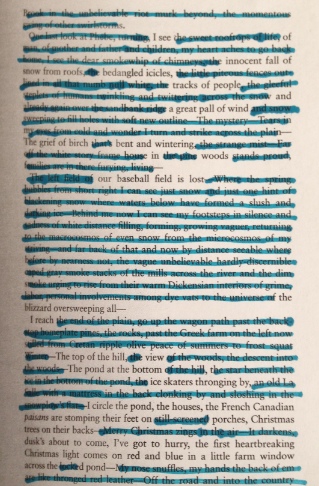

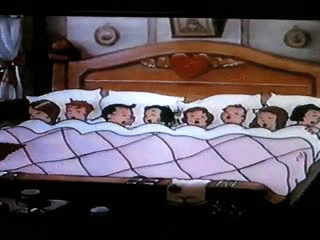
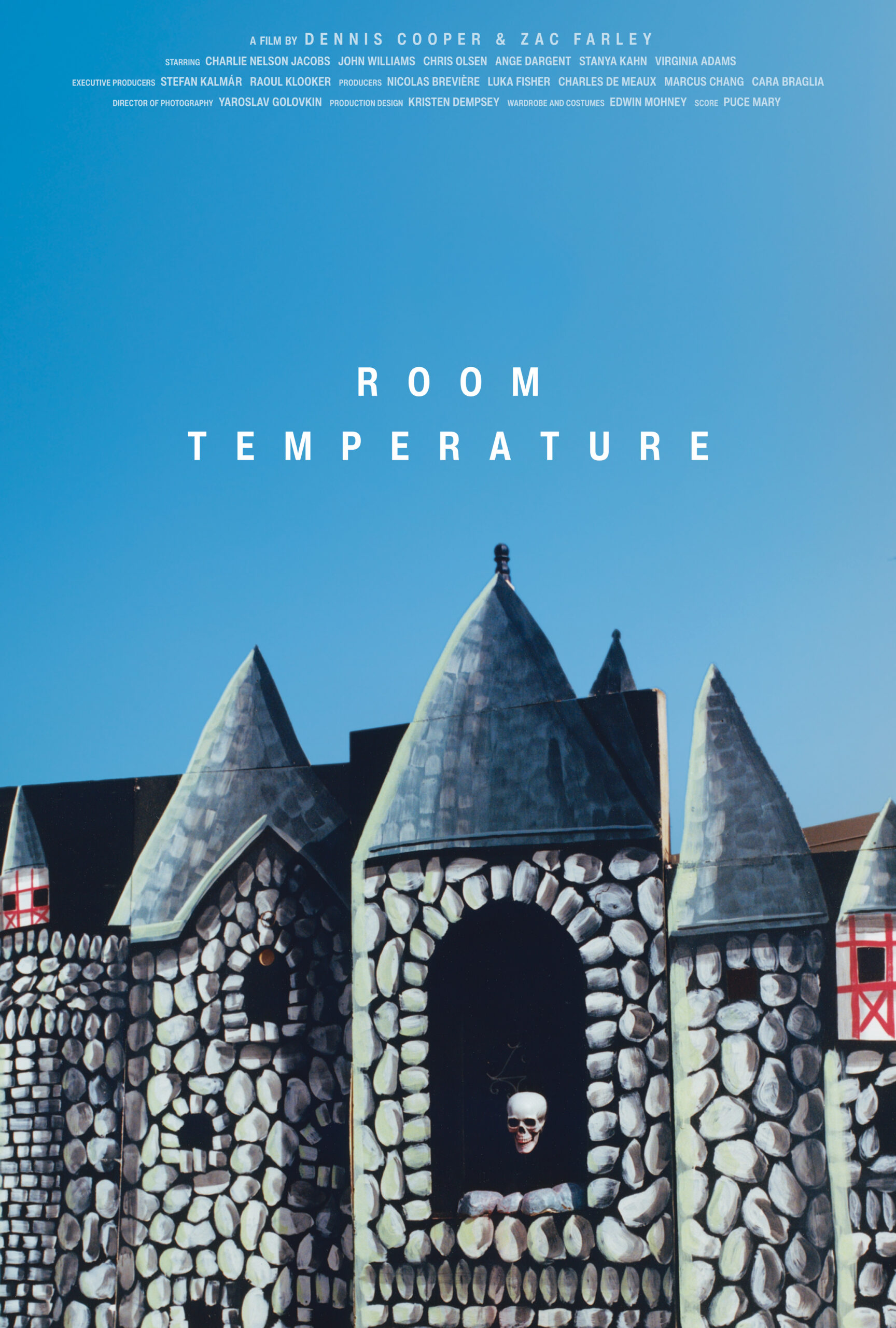



 Now available in North America
Now available in North America 